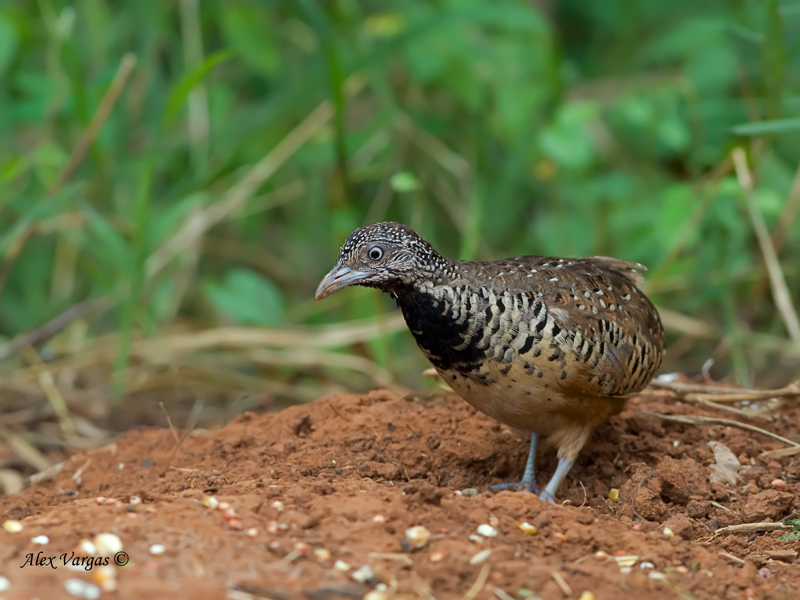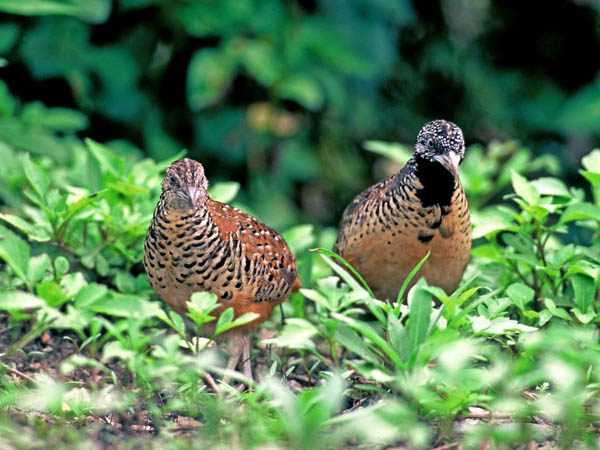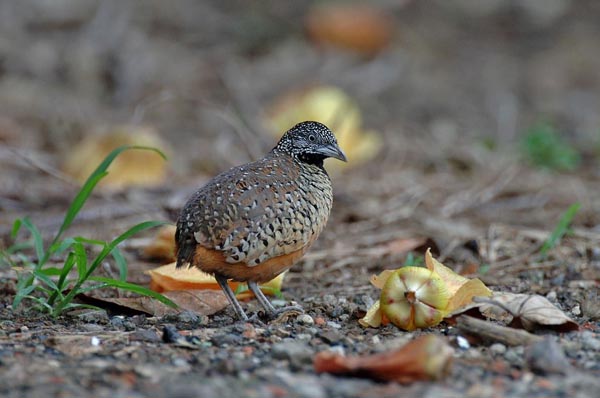
Turnix suscitator
TAXONOMY
Tetrao suscitator Gmelin, 1789, Java. Eighteen subspecies recognized.
Possibly related to Madagascar buttonquail (T. nigricollis).
OTHER COMMON NAMES
English: Common, dusky, Indian, or Philippine buttonquail;
French: Turnix combattant; German: Bindenlaufhьhnchen;
Spanish: Torillo Batallador.
PHYSICAL CHARACTERISTICS
5.9–6.7 in (15–17 cm); male 1.2–1.8 oz (35–52 g), female
1.7–2.4 oz (47–68 g). Medium-sized buttonquail, rusty brown
with black-and-white head pattern, barred underside, and pale
legs. Female more brightly colored, with variable reddish collar,
and, in some subspecies, throat barred black and white
rather than solid black. Juvenile smaller and paler, with spotted
underside.
DISTRIBUTION
Eight subspecies in mainland south and Southeast Asia from
India through Indochina to south China and Malay Peninsula;
one subspecies in Sri Lanka; one subspecies in Japanese archipelago;
one subspecies in Taiwan; two subspecies in Greater
Sunda Islands; three subspecies in Philippine archipelago; one
subspecies in Sulawesi; one subspecies in Lesser Sunda Islands.
HABITAT
Grassland, farmland, abandoned cropland, secondary growth,
scrub, bamboo thickets, and forest edges.
BEHAVIOR
Terrestrial. Territorial when breeding.
FEEDING ECOLOGY AND DIET
Eats seeds, green shoots, and invertebrates obtained by gleaning
and scratching on the ground.
REPRODUCTIVE BIOLOGY
Lays in all months of the year according to locally favorable
conditions; apparently avoids the wettest and driest months.
Females are sequentially polyandrous. Clutch usually four eggs,
though up to six. Incubation 12–14 days. Chicks reach adult
size at 40–60 days.
CONSERVATION STATUS
Not threatened. Widespread and common to very common.
SIGNIFICANCE TO HUMANS
Hunted for food. Also, females caged and used in “hen-fights.”
Established in aviculture.
Photo Gallery of - Barred buttonquail




 Animalia Life
Animalia Life